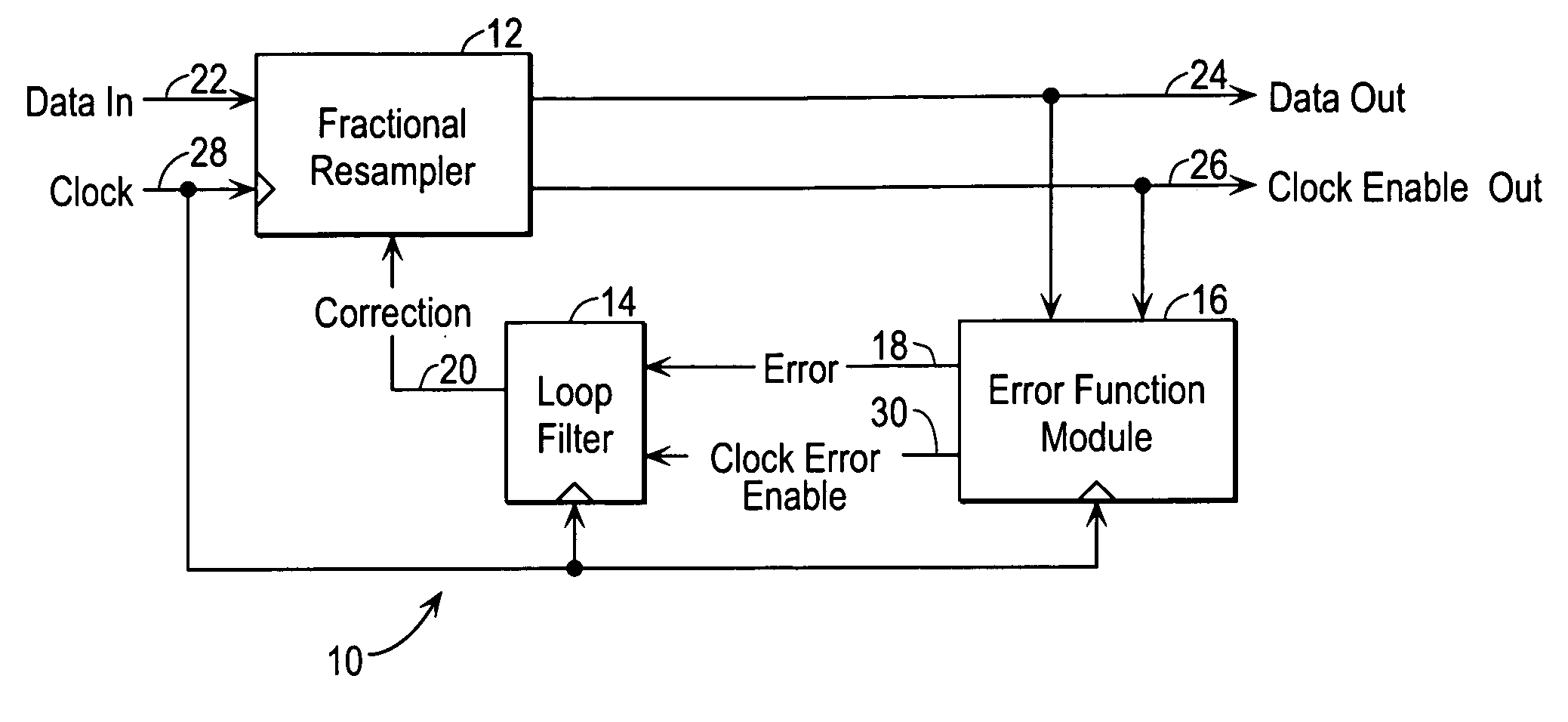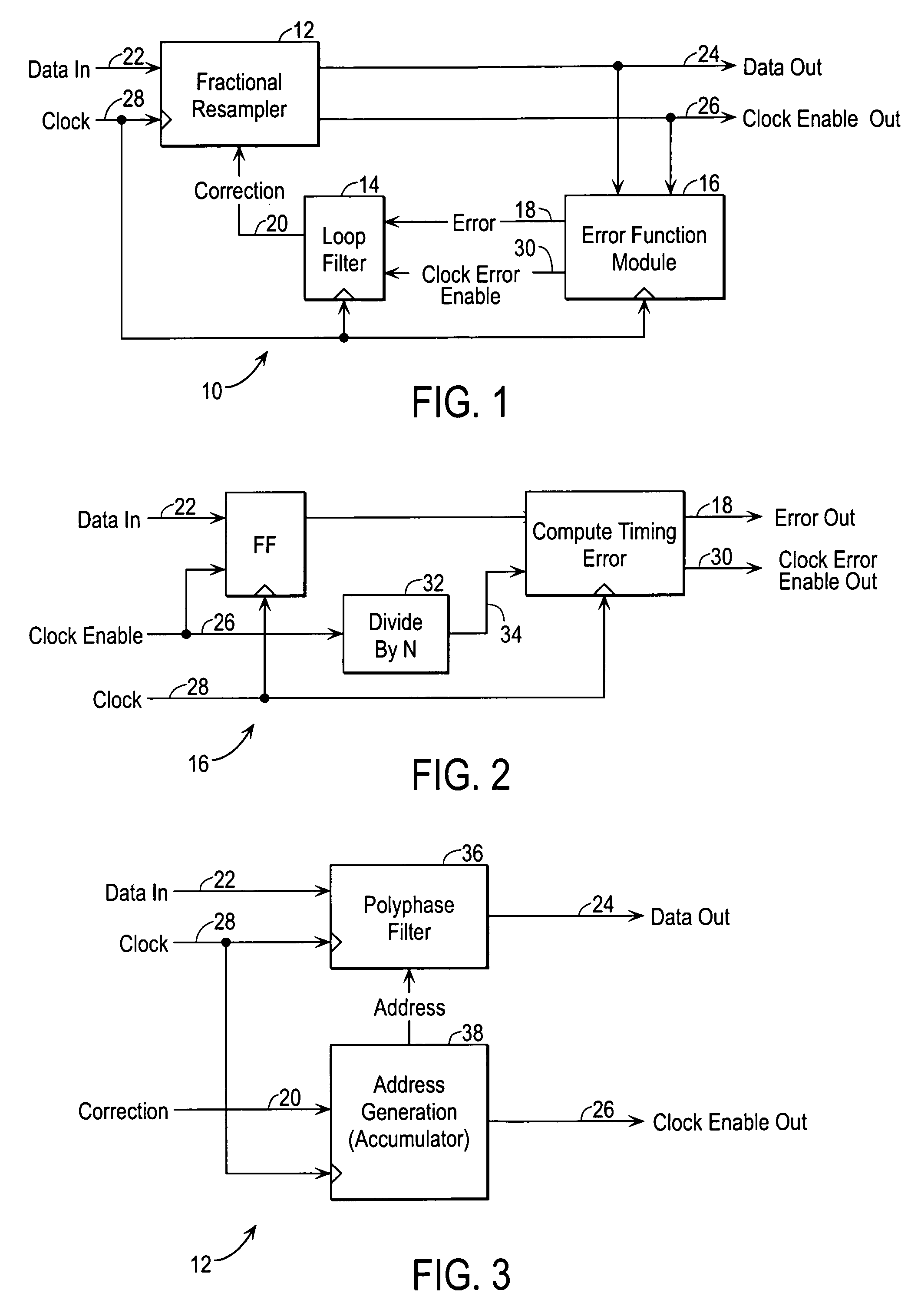Method and system for providing adaptive timing recovery for low power application
a low-power application and adaptive timing technology, applied in the field of adaptive timing recovery, can solve the problems of high power consumption in electronic devices, conventional adaptive timing recovery generally requires significant power consumption, and low so as to reduce the execution rate of error function modules, reduce the rate of clock enable signals, and reduce the effect of error function modules
- Summary
- Abstract
- Description
- Claims
- Application Information
AI Technical Summary
Benefits of technology
Problems solved by technology
Method used
Image
Examples
Embodiment Construction
[0014]The present invention in the form of one or more exemplary embodiments will now be described. FIG. 1 is a simplified block diagram illustrating an exemplary embodiment of the present invention. Referring to FIG. 1, there is shown a system 10 that is capable of providing adaptive timing recovery in accordance with the present invention. The system 10 includes a fractional resampler 12, a loop filter 14 and an error function module 16. The fractional resampler 12, the loop filter 14 and the error function module 16 are arranged in a servo feedback configuration to form a timing recovery loop. A data signal 22 is provided to the fractional resampler 12. The fractional resampler 12 samples the data signal 22 and generates a sampled output 24. The sampled output 24 from the fractional resampler 12 is fed to the error function module 16. Output in the form of an error signal 18 from the error function module 16, in turn, is fed to the loop filter 14. The loop filter 14 then provides...
PUM
 Login to View More
Login to View More Abstract
Description
Claims
Application Information
 Login to View More
Login to View More - R&D
- Intellectual Property
- Life Sciences
- Materials
- Tech Scout
- Unparalleled Data Quality
- Higher Quality Content
- 60% Fewer Hallucinations
Browse by: Latest US Patents, China's latest patents, Technical Efficacy Thesaurus, Application Domain, Technology Topic, Popular Technical Reports.
© 2025 PatSnap. All rights reserved.Legal|Privacy policy|Modern Slavery Act Transparency Statement|Sitemap|About US| Contact US: help@patsnap.com


